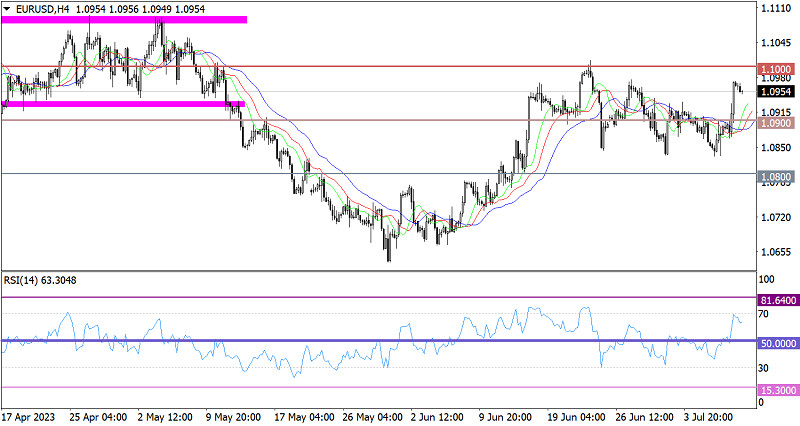
If you look at the unemployment rate in the United States, the subsequent weakening of the dollar raises several questions. After all, unemployment fell from 3.7% to 3.6%. And if we want to understand why the dollar sharply fell, it is necessary to pay attention to other indicators. In particular, Non-Farms showed that the US economy added 209,000 jobs in June 2023, below forecasts of 250,000. But even this indicator does not provide answers, as this figure is generally sufficient to maintain labor market stability. And after all, the unemployment rate is already close to record lows. However, private payrolls increased 149,000. It turns out that almost every third job is created in the public sector and without state support, the labor market would look completely different. And clearly not for the better.
Moreover, we should not forget that both American business and society as a whole have long had an entrenched liberal view of the world, with its ideas of non-interference by the state and a reduced role in the life of the country. And from this point of view, the expansion of the public sector is only an increase in control and supervision, hampering the development of the private sector. And also at the expense of citizens and business. And public servants themselves produce nothing, except for the budget deficit and public debt, which have already grown to obscene amounts. So the dollar's depreciation was more of an emotional one based on how the American public felt about certain things.
And since we are talking about emotions, this movement cannot be sustainable. Moreover, a further decline in unemployment leaves no doubt that the Federal Reserve will continue to raise interest rates, as this is the only way to deal with an overheated labor market. And there is no doubt that it is burning up. If the situation is not brought under control, the consequences will be terrifying, and the most obvious manifestation will be a sudden and sharp increase in unemployment. This should not be allowed under any circumstances. And in principle, some semblance of a rebound began to manifest itself as early as Friday. Considering that today's macroeconomic calendar is basically empty, the dollar will gradually recover part of its recent losses throughout the day.

The euro has almost fully recovered its value relative to the US dollar following a recent correction. Buyers see the resistance level at 1.1000 as a hurdle.
On the four-hour chart, according to the RSI tool, there is a signal that shows the euro's overbought conditions in the intraday period.
On the same chart, the Alligator's MAs are headed upwards, which corresponds to the stage of recovery.
OutlookDue to the euro's overbought conditions, the currency may pull back in the short-term and intraday periods. As for extending the current ascending cycle, traders need to decide what they need to do about the resistance level of 1.1000. Keeping the price above this mark could lead to subsequent growth in the volume of long positions.
The complex indicator analysis points to the recovery process in the euro in the short-term and intraday periods.